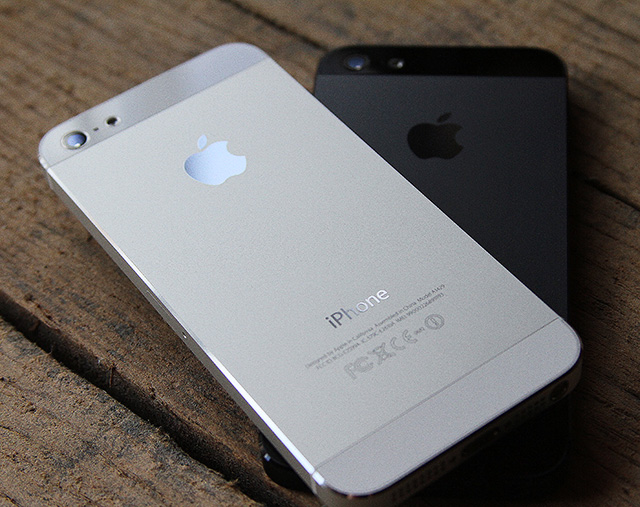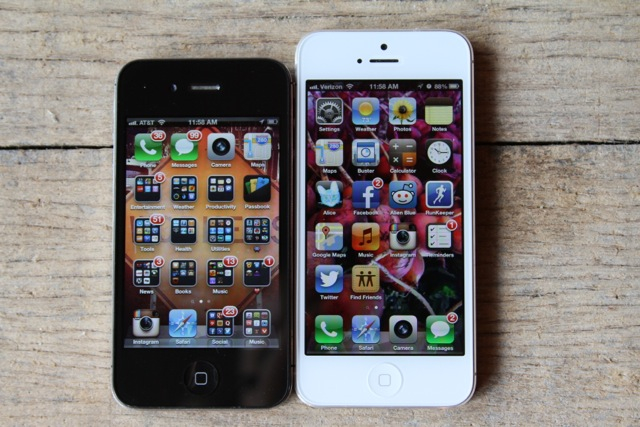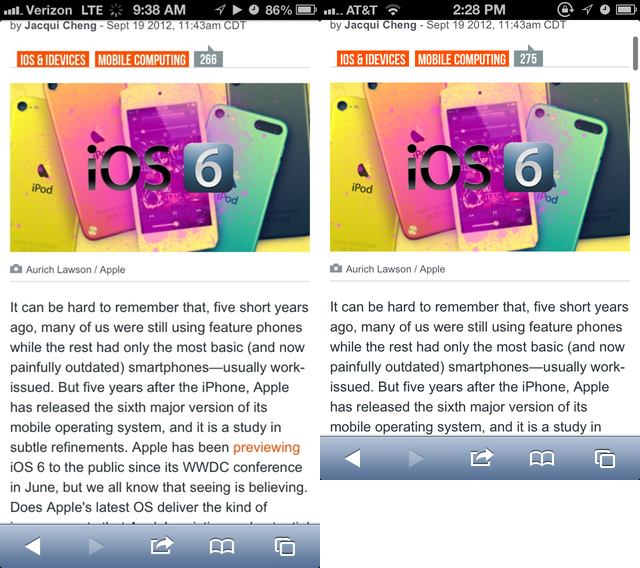iPhone 5: a little bit taller, a little bit baller
And if you've got a girl, you can call her. On LTE.

Apple brought plenty of improvements to the iPhone this year: the company designed an entirely new processor, there's a new camera, and the phone now supports 4G LTE data speeds. iOS 6 was just rolled out in conjunction with the iPhone 5 release and features its own significant upgrades (read our review of iOS 6 for more details on what's new).
Are these and other changes enough? We hope to help you answer that question with this review. So strap on those fairy wings from your Halloween box in the back of the closet; we're about to get "magical."
Screen size doesn't matter. Or does it?

iPhone 4S on the left, iPhone 5 on the right.
The iPhone 5's 1136×640 screen features the same "retina" class pixel density as the iPhone 4S—326 pixels per inch. Though images on the iPhone 5 should look just as sharp as those on the iPhone 4 and 4S, Apple claims that the iPhone 5 has 44 percent more color saturation, making photos, icons, videos, games, and other elements appear more vivid.

iPhone 5 on the left, iPhone 4S on the right. The visible difference in color saturation is very slight.
The slightly taller screen has other benefits, largely in the form of more screen real estate for your home screen and for apps. Apple pointed out at its September media event that the iPhone 5's home screen now fits five rows of icons instead of just four—a minor point, but still much appreciated by those of us who experience icon claustrophobia.

iPhone
5 screenshot on the left, iPhone 4S screenshot on the right. When
browsing the Web (or any content), you can now fit more on the screen.
Developers are now updating their apps to take advantage of the larger screen—many apps already have updates in the App Store. If your favorite apps haven't been updated yet, Apple centers them in the middle of the iPhone 5 screen with a basic black bar on the top and bottom. Instagram is one such app that has yet to be updated; here's how it looks on the iPhone 5 screen right now:

Apps
(such as Instagram) that aren't yet updated for the iPhone 5's larger
screen get centered with black bars at the top and bottom.
That hasn't stopped the Internet from teasing Apple over its decision to release a taller iPhone. Tall phone is tall! But in practice, it works. Other iPhone buyers may like it as I do; at worst, they may feel neutral about it. But it's hard to see many people actively disliking the screen.






















